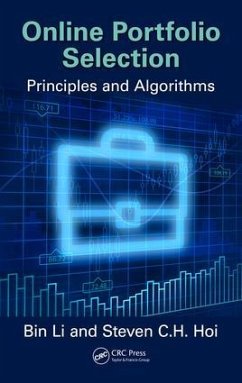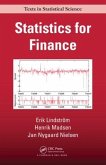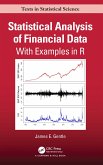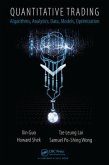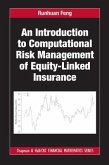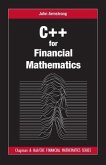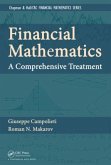This book investigates the OLPS problem. The authors unveil four innovative algorithms based on the cutting edge machine learning techniques and also detail a powerful trading simulation tools. The book includes MATLAB® code for simulation trading systems that use historical data to evaluate the performance of trading strategies.
Hinweis: Dieser Artikel kann nur an eine deutsche Lieferadresse ausgeliefert werden.
Hinweis: Dieser Artikel kann nur an eine deutsche Lieferadresse ausgeliefert werden.
"Ever since access to financial data, storage capacity, and computing power stopped acting as barriers to entry, institutional-quality asset allocation solutions have become widely available to individual investors and financial advisors. Coupled with easy access to inexpensive building blocks like Exchange-Traded Funds, this dynamic has brought the spectre of digital disruption to the asset management industry. In Online Portfolio Selection, Li and Hoi do an excellent job explaining what's actually under the hood of the "robo-advisor" applications. Unlike many books on related financial technology subjects, they don't leave the reader with only high-level rhetoric on machine learning and financial technology, but instead roll up their sleeves and delve into the nuts and bolts of the various algorithms that power this irreversible trend. A must-read."
-Guy Weyns, PhD., Partner, NGEN Capital, London
"This is an excellent book showing a comprehensive menu of state-of-the-art online machine-learning algorithms in online portfolio selection and trading. It explains clearly how different algorithms can perform based on data-driven patterns that are exploited using intensive computational methods. It is a must-read for serious quantitative traders."
Lim Kian Guan, PhD., OUB Chair Professor of Quantitative Finance, Singapore Management University
-Guy Weyns, PhD., Partner, NGEN Capital, London
"This is an excellent book showing a comprehensive menu of state-of-the-art online machine-learning algorithms in online portfolio selection and trading. It explains clearly how different algorithms can perform based on data-driven patterns that are exploited using intensive computational methods. It is a must-read for serious quantitative traders."
Lim Kian Guan, PhD., OUB Chair Professor of Quantitative Finance, Singapore Management University

